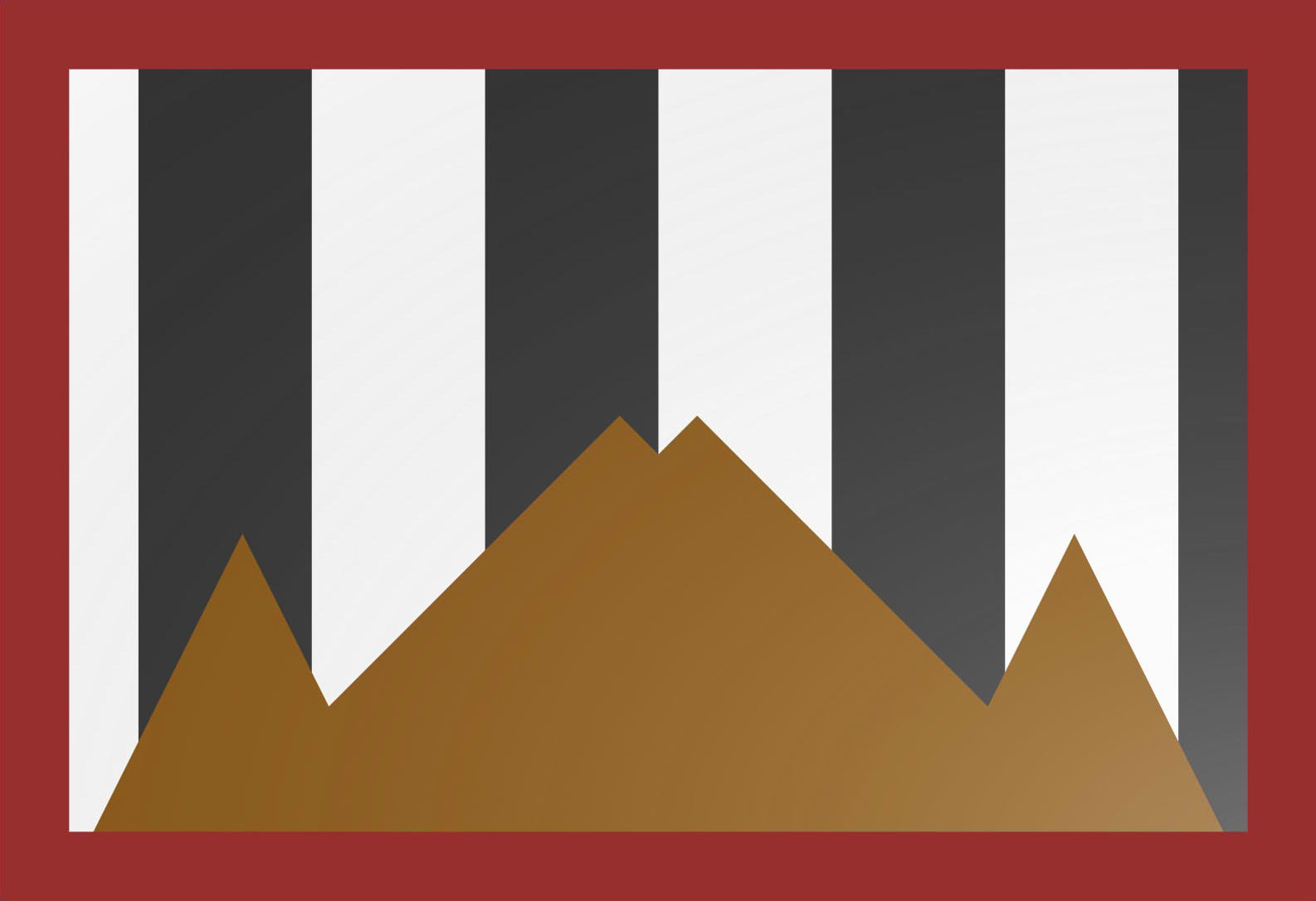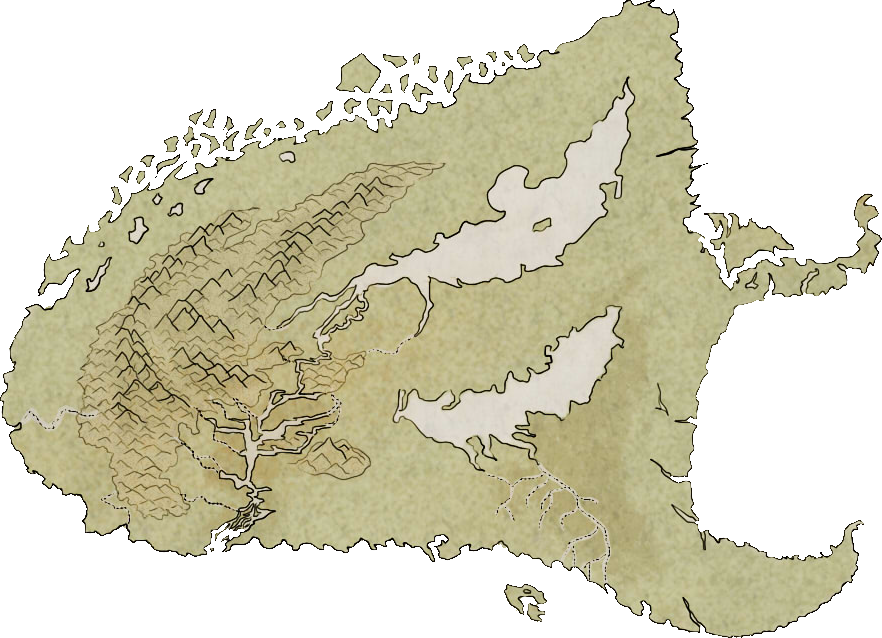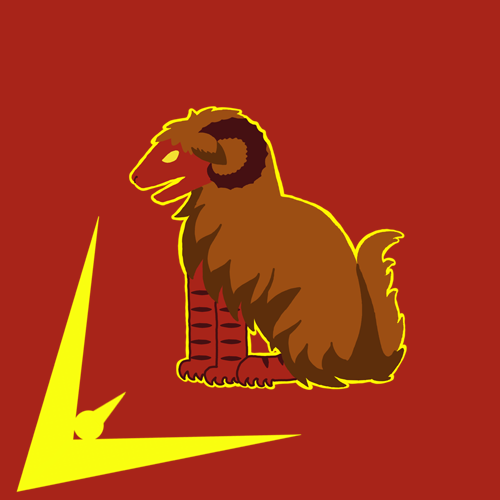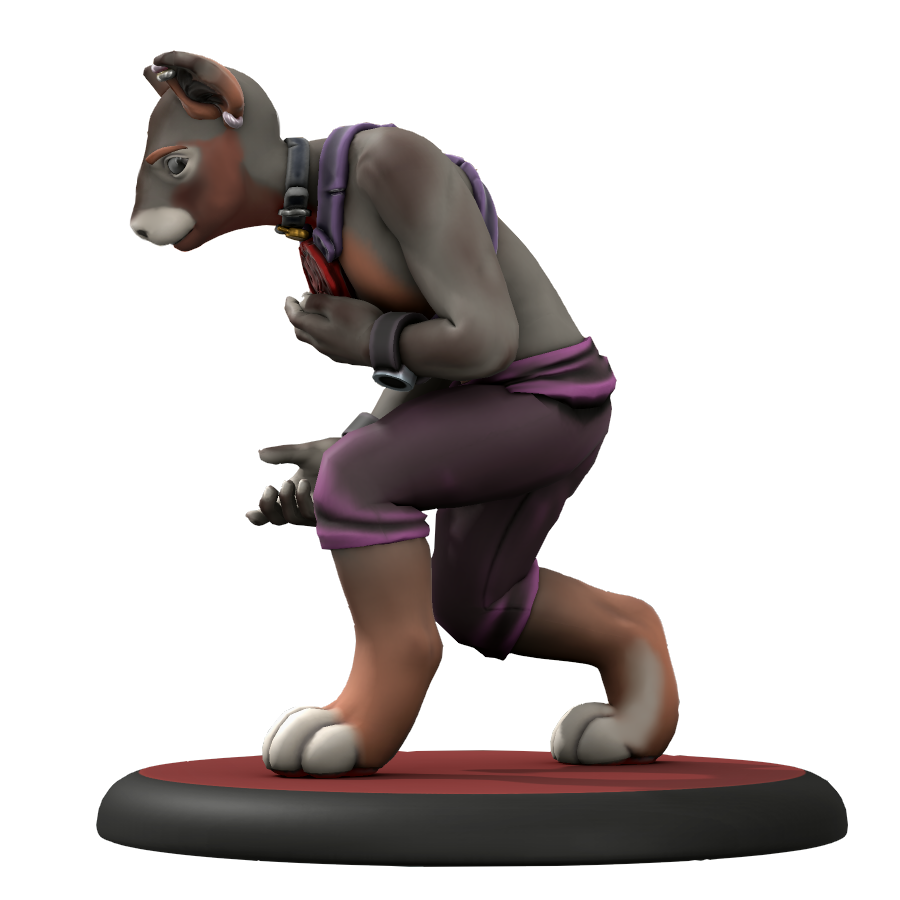Breguine ("breggin")
The loss of the nation of Bregos was one of the most immediate and brutal results of the High Rust.
This mostly isolated nation living atop the mountain range of Thaur Island was wiped out in the span of half a year, leaving their homeland destroyed and only a few dozen survivors. However, until that point, they were unique in their conquering of the most inhospitable of environments: the rocky sides of the mountains with their houses hanging over the void and surrounded by tetsus.
For this reason they were usually called Climbers. Breguines were usually of goat, sheep, llama, puma, leopard or cavy phenotypes. Nowadays many people of these phenotypes living in Thaur are assumed to be surviving Breguines.
However, in order to acquire food diversity and tools, they used to trade with the people from the Kingdom of Merthiorn (Their surrounding country, nowadays the Kingdom of Thaur)
Breguines provided Merthiorn with minerals and construction materials, but they were also sought after for their music and musical instruments. Bagpipes, flutes and other wind instruments were popular, while big, difficult to transport instruments were non existent.
High Stews were at the same time a special family meal and a display of mastery, and the fact that many of its ingredients were imported made its price fluctuate strongly (usually upwards), to the point where Breguines started measuring their economy on the "amount of high stews" that could be made with the same money as the year before.
Salads with cold meat cut in dices were popular, as well as sauteed pasta with vegetables, small pies of multiple flavours, and weird, unidentifiable but delicious sauces with herbs. Many popular dishes with actual recipes started their lives as chenoa towers, with the ever pervailing "Wow actually this tastes pretty amazing... what did I put in here again?". The origin of the name of the chenoa towers is uncertain, and Breguine parents like to make up wild stories about it.
In the end most just assumed the custom was attributed to some chef named Chenoa and lost to time, and others argued that there probably was some sort of linguistic explanation to it.
This mostly isolated nation living atop the mountain range of Thaur Island was wiped out in the span of half a year, leaving their homeland destroyed and only a few dozen survivors. However, until that point, they were unique in their conquering of the most inhospitable of environments: the rocky sides of the mountains with their houses hanging over the void and surrounded by tetsus.
Demography
The Breguines were a pretty homogenous people, almost all being of furry race and spanning a very specific group of phenotypes: only those able to climb the mountains dexterously.For this reason they were usually called Climbers. Breguines were usually of goat, sheep, llama, puma, leopard or cavy phenotypes. Nowadays many people of these phenotypes living in Thaur are assumed to be surviving Breguines.
Genders and social roles
Breguines were pretty standard on their social roles, recognizing four genders: women, men, and the unusual neutral and shifting. Women were usually females and men usually male, while shifting were individuals that went between both, and neutrals were usually these of indistinct sex or that didn't identify with any gender. Their social roles for genders were pretty similar to these of the rest of the island, and as such, quite lax.Cultural and technological wealth
The Breguines, living mostly isolated in their mountaintops, sustained themselves with technologies almost only used there such as terrace agriculture and pulley elevators.However, in order to acquire food diversity and tools, they used to trade with the people from the Kingdom of Merthiorn (Their surrounding country, nowadays the Kingdom of Thaur)
Breguines provided Merthiorn with minerals and construction materials, but they were also sought after for their music and musical instruments. Bagpipes, flutes and other wind instruments were popular, while big, difficult to transport instruments were non existent.
Cuisine
Breguines were well known for their impressive cuisine, that had to become creative due to their difficulty to get varied kinds of nutritious foods. They relied heavily in spices and small game, and made a point of never letting food go to waste. Here are two examples of traditional Breguine dishes that became widely popular in the rest of the archipelago:The High Stew
"Stews are always better the next day, and ours are above all"In the Breguine tradition, a good chunk of family meals consisted on what was known as "Stew of Everything". As the name implies, they were slow cooked stews with dozens of whichever ingredients they were able to find in their kitchens, generally with a small base of a strong meat or pasta and a majority of assorted vegetables. Usually made in very big pots, they were intended to last several days. The High Stews differentiated from them for having more unique set of high quality ingredients, flavoured with imported spices and strong flavours.
High Stews were at the same time a special family meal and a display of mastery, and the fact that many of its ingredients were imported made its price fluctuate strongly (usually upwards), to the point where Breguines started measuring their economy on the "amount of high stews" that could be made with the same money as the year before.
Chenoa Towers
"Dad, why are chenoa towers always different?"While not an actual recipe on itself, chenoa towers is the name used by Breguines for when they created new dishes by combining leftovers from previous days.
Salads with cold meat cut in dices were popular, as well as sauteed pasta with vegetables, small pies of multiple flavours, and weird, unidentifiable but delicious sauces with herbs. Many popular dishes with actual recipes started their lives as chenoa towers, with the ever pervailing "Wow actually this tastes pretty amazing... what did I put in here again?". The origin of the name of the chenoa towers is uncertain, and Breguine parents like to make up wild stories about it.
In the end most just assumed the custom was attributed to some chef named Chenoa and lost to time, and others argued that there probably was some sort of linguistic explanation to it.

Flag of Bregos by Naelin
Demonym
Breguine / Climber
Recognized Genders
Woman
Man
Neutral
Shifting
Breguine / Climber
Recognized Genders
Woman
Man
Neutral
Shifting
Encompassed species
Related Items
Related Myths
Related Locations








Such an interesting culture! I love that you added a couple of dishes to showcase. I was also interested that you chose to focus on an ethnicity that was basically wiped out. Seeing that, I think talking more about the surviving Breguines would have been very interesting.